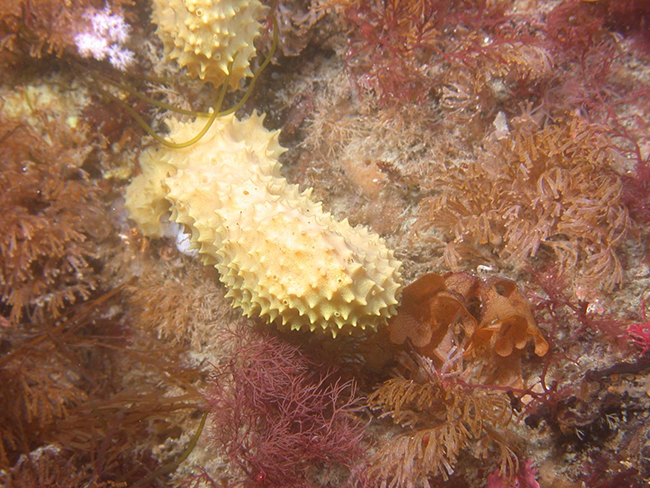![<i>Dendrilla membranosa</i>, near Palmer Station, Antarctica. [Bill Baker]” /><br />
<span class=](https://genengnews.com/wp-content/uploads/2018/08/115745_web1218224923-1.jpg) Dendrilla membranosa, near Palmer Station, Antarctica. [Bill Baker]
Dendrilla membranosa, near Palmer Station, Antarctica. [Bill Baker]
The exponential rise of antimicrobial resistance has sent researchers scrambling to identify novel compounds that can circumvent the microbial resistance mechanisms. This critical undertaking has caused many scientists to think outside the box and travel to extreme locations for new sources of antimicrobial compounds.
Now, researchers from the University of South Florida (USF) may soon have a new treatment against methicillin-resistant Staphylococcus aureus (MRSA) courtesy of a sponge that takes up residence in the Antarctic. The USF team have isolated and tested an extract from the sponge Dendrilla membranosa, which contains a natural compound—dubbed darwinolide—that can eliminate more than 98% of MRSA cells during in vitro analysis.
In the past, highly resistant MRSA infection was especially problematic only in places such as hospitals and nursing homes. However now, it has developed into an infection that can be found in commonly used places, such as gyms, locker rooms, and schools.
“In recent years, MRSA has become resistant to vancomycin and threatens to take away our most valuable treatment option against staph infections,” explained co-senior study author Lindsey Shaw, Ph.D., associate professor of microbiology at USF.
MRSA is unique among microbial invaders in that it can cause infections in almost every niche of the human host, from skin infections, to pneumonia, to endocarditis—a serious infection of tissues lining the heart. Moreover, like many other bacteria, MRSA can form a biofilm, adding to the level of difficulty for halting microbial growth. Unfortunately, the pharmaceutical industry's efforts to find new antibiotics to replace those no longer effective has been outpaced by the resistance mechanisms of this virulent bacterial strain.
“Biofilms, formed by many pathogenic bacteria during infection, are a collection of cells coated in a variety of carbohydrates, proteins, and DNA,” Dr. Shaw remarked. “Up to 80% of all infections are caused by biofilms and are resistant to therapy. We desperately need new anti-biofilm agents to treat drug-resistant bacterial infections like MRSA.”
Unfortunately, the pharmaceutical industry's efforts finding new antibiotics to replace those no longer effective has been outpaced by the resistance mechanisms of this virulent bacterial strain. So the USF team has literally gone to the “ends of the Earth” to help in the fight against MRSA by gathering marine invertebrates from Antarctica, such as sponges, to carry out natural product isolation, which means drawing out, modifying, and testing natural substances that may have pharmaceutical potential.
The USF investigators were able to extract and characterize chemical structures to create darwinolide from the freeze-dried Antarctic sponges and then test its inherent effectiveness against MRSA.
“When we screened darwinolide against MRSA we found that only 1.6% of the bacterium survived and grew. This suggests that darwinolide may be a good foundation for an urgently needed antibiotic effective against biofilms,” noted co-senior study author Bill Baker, Ph.D., professor of chemistry at USF and whose research team reorganized the chemical composition of the extracted sponge.
The findings from this study were published recently in Organic Letters in an article entitled “Darwinolide, a New Diterpene Scaffold That Inhibits Methicillin-Resistant Staphylococcus aureus Biofilm from the Antarctic Sponge Dendrilla membranosa.”
In the last 70 years, despite the discovery and use of antibiotics to treat infections, bacterial disease remains the second-leading cause of death globally, especially among children and the elderly. In the U.S. alone, there are two million hospital-acquired infections annually with at least 100,000 deaths, many resulting from bacteria resistant to current antibiotics. These staggering figures underscore the need for an infusion of new antimicrobial compounds into the diminishingly effective therapeutic pipeline.
“We suggest that darwinolide may present a highly suitable scaffold for the development of urgently needed, novel, anti-biofilm-specific antibiotics,” the researchers concluded.






